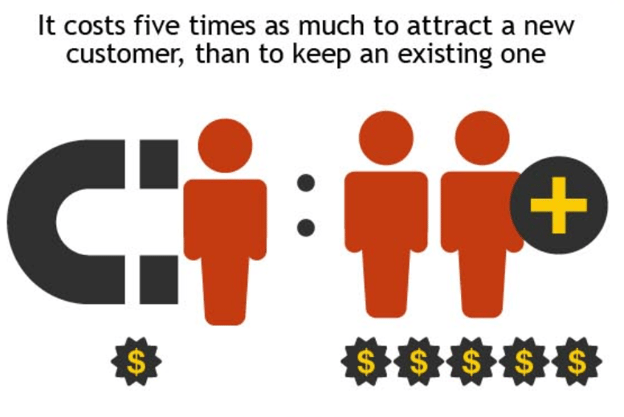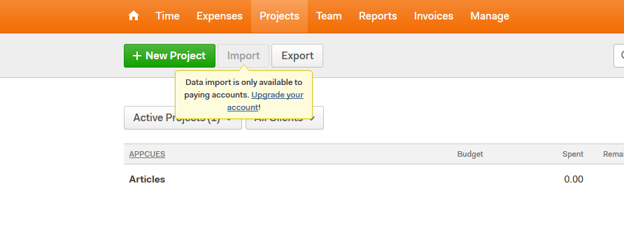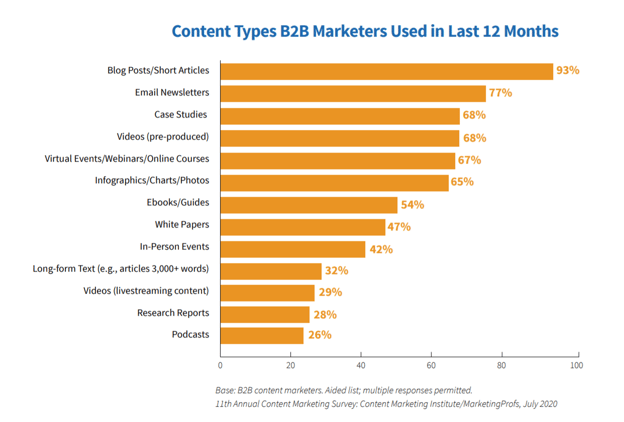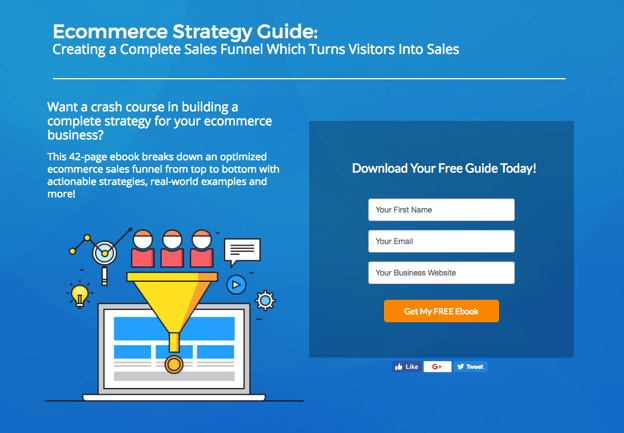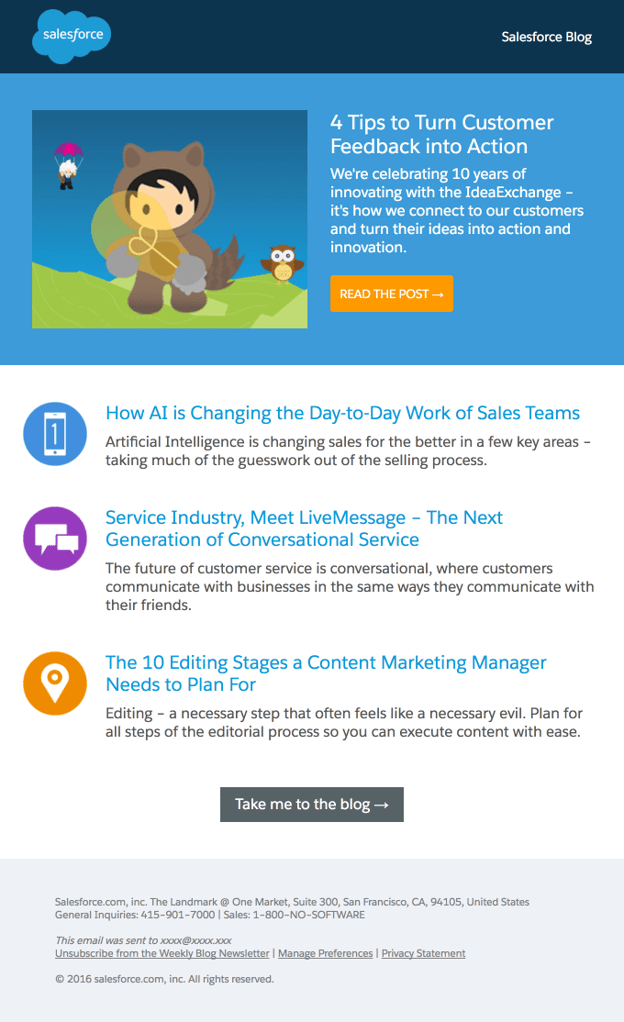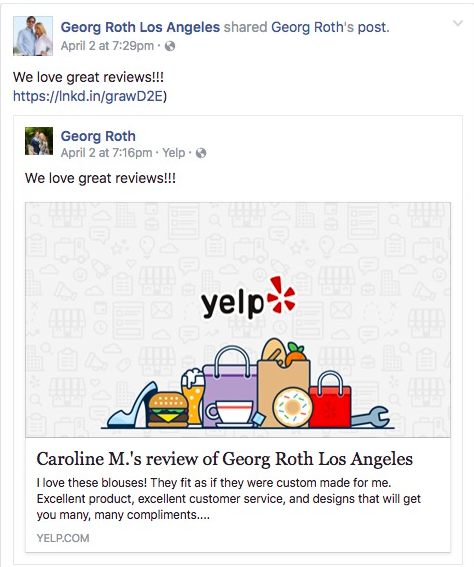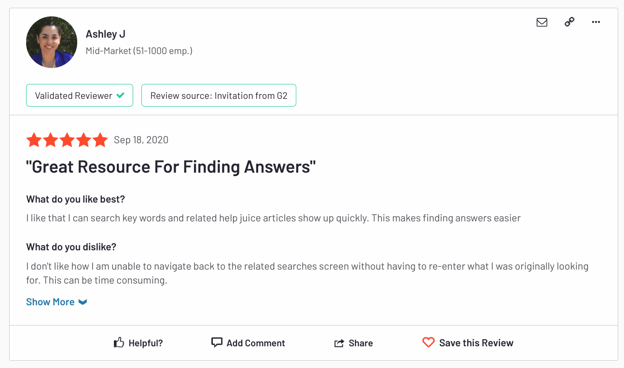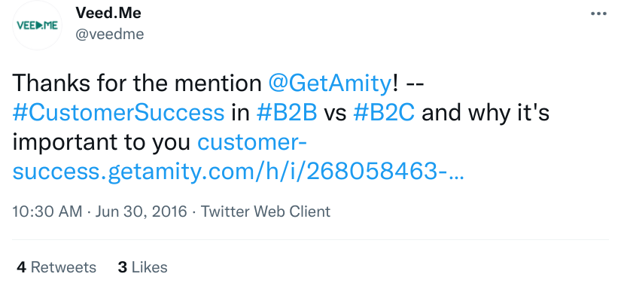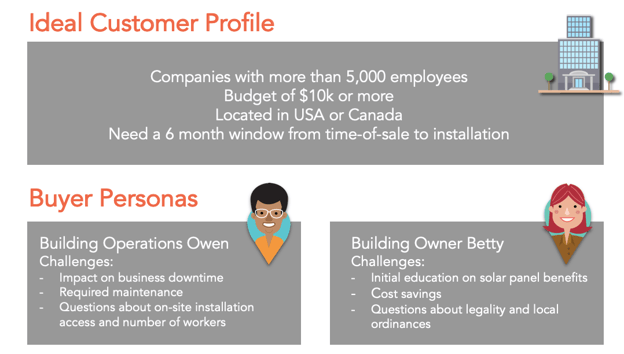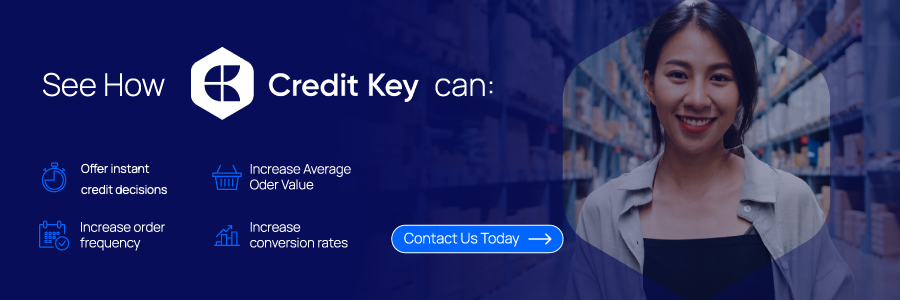In the business world, the only thing more important than making sales is making more sales.
In fact, HubSpot’s annual Not Another State of Marketing Report consistently finds that increasing sales is among the top priorities for B2B businesses in all sectors.
Of course, improving your sales numbers requires more than just a flip of a switch. Rather, a strategic and holistic approach is needed to get more customers on board — and to increase the overall value they provide your business.
In this article, we’ll dig into four key things you’ll need to do to supercharge your sales efforts and spur growth for your B2B company.
1. Get More Value Out of Your “Smaller” Customers
If you’re at all familiar with the Pareto Principle, you know that 80% of your sales revenue comes from about 20% of your customers.
This typically leads many B2B teams to focus squarely on their most-valuable clients — which unfortunately causes them to become somewhat neglectful of their middle- and low-value customers.
To be sure, your best customers absolutely should be your top priority...but they shouldn’t be the only members of your audience you cater to in full.
For one thing, neglecting your lower-value customers means you’ll always be at risk of losing them. With the cost of acquiring new customers drastically outweighing the cost of retaining your current ones, keeping even your smallest clients around is just better for your business — period.
What’s more, your low-value customers have a ton of room to grow. While they may currently only have a need for your more basic products or services, a time will almost certainly come where they’ll need a bit more from your brand. As long as you’ve delivered on your promises up to that point, they’ll be pretty likely to check out the more advanced solutions you have to offer.
(In contrast, your high-value customers may eventually “top out” of your current offerings — and will have much less room to grow. Increasing their value from this point will require that you evolve your products or services in some way or another. While not impossible, it may be more prudent to optimize your current offerings first and foremost.)
At any rate, there are a number of effective strategies for generating more revenues and sales from your lower-value customers.
Timely reminders and replenishment offers are a great way to improve purchase frequency. At the very least, these reminders will increase the chances of your customer returning in the first place. At best, they end up spending more and more with your business, over less and less amount of time.
Taking this a step further, many B2B teams are now using loyalty and other rewards programs to keep their customers onboard — and get them buying more often.
HP’s Planet Partners program, for example, rewards companies who recycle ink cartridges and other office materials. The more a company recycles, the more discounts they’ll receive on their purchases from HP — a valuable, ongoing incentive that will keep them coming back time and time again.
Upselling and cross-selling are perhaps the go-to strategies for increasing your customers’ average order value (AOV) and overall lifetime value (LTV).
With upselling, you’ll be showcasing products or services that are similar to the customer’s current solution, but that offer more in terms of functionality and value.
Cross-selling entails showcasing accessories, add-ons, and other related products that enhance the value of the customer’s main purchase.
Finally, offering customer-friendly payment and financing options will give your lower-value customers more buying power. This, in turn, will allow them to make greater investments into your more powerful solutions — which will have major benefits for both parties involved.
Check out how Voltage Coffee used Credit Key’s Buy Now, Pay Later financing option to 10X their average order value.
While investing too heavily into your low-value customers probably isn’t the best course of action, you don’t want to completely ignore them, either. Instead, meet them where they are — and make sure they have exactly what they need to reach the next level with your brand.
2. Streamline the Sales Process Through Ecommerce
In the years to come, ecommerce adoption will continue to increase dramatically in the B2B realm.
So, if you’ve yet to bring your B2B company into the ecommerce realm, you’re likely missing out on a lot of potential business.
Now, this isn’t to say you want to take a completely B2C-like approach to ecommerce.
Rather, you’ll be looking to bring the traditional B2B purchasing experience into the digital realm to make it more streamlined and convenient for your customers.
This means using your brand’s online presence to deliver exactly what your customers need to move their buying decision forward at each stage of the journey.
Generating and Nurturing New Leads and More Sales
Your leads and prospects, for starters, will be looking for information about your brand’s products, services, and overall value.
To this end, content marketing has become crucial.
As a 2021 report from Content Marketing Institute shows, social media, email, and blogs are the key channels B2B companies are focusing on at the moment. As for the type of content teams are developing, we’re seeing a healthy mix of text and video — with an increasing focus on interactive and community-driven content.
It’s also important to create both open and gated content for the purpose of generating leads. With open content (e.g., blog posts, social media content, etc.) you can spur initial, surface-level engagement — then offer more in-depth content in exchange for your new lead’s contact information.
You might also develop a customer-facing knowledge base to allow your audience to dive deep into the technical aspects of your products and services. While not primarily a marketing tactic, per se, a knowledge base can give potential customers the specific info they need to start considering your brand more seriously.
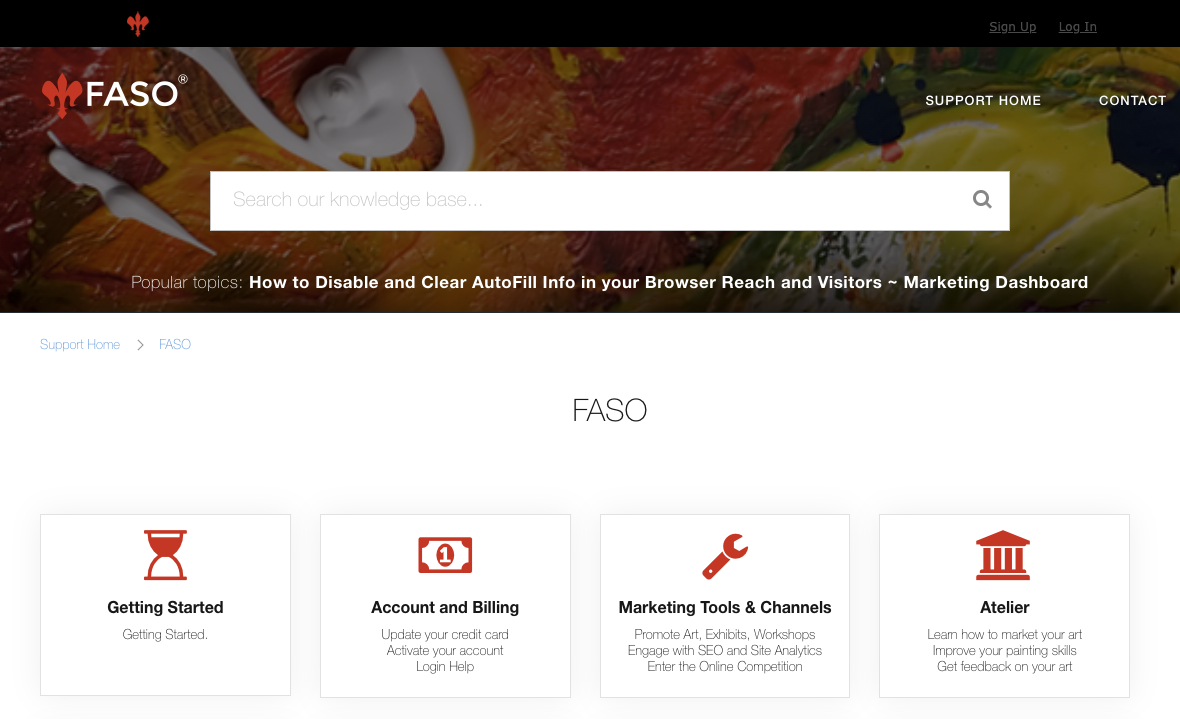
The goal is to deliver need-to-know information about your brand’s offerings using the channels and formats that your audience prefers — and that enables you to deliver the necessary information as effectively as possible.
On that note, you also want to give your potential customers more control over how they engage with your brand from the get-go. As we’ve shown, a multichannel approach is non-negotiable at this point. Moreover, each channel your brand operates on should be optimized for browsability and overall functionality.
In other words, your customers should always be able to accomplish what they set out to when engaging with your brand’s digital presence. The more productive and pleasant their initial experiences with your brand are, the more likely they’ll be to make a purchase in the near future.
Streamlining the Purchasing Process
For both your brand new and current customers alike, an optimized buying process is vital for maximizing conversions — and minimizing instances of cart abandonment.
(In fact, a poor buying experience is often the reason buyers decide against making a purchase.)
The biggest thing here is to ensure your customers can actually go through with their digital purchases as intended. If they encounter any glitches along the way (from broken links and buttons to unsecured payment options), you run a pretty good risk of losing the sale — and potentially losing the customer altogether.
You also want to remove any unnecessary friction throughout the process, as well. One key way to do this — especially for your newer customers — is to enable guest checkout.
Yes, you’ll ideally want them to sign up for a company account (more on this in a bit). But, in the interest of enabling quick and seamless purchasing, offering a guest checkout option is a proven way to make it happen.
It’s also important to allow your returning customers to make repeat purchases just as easily.
(This is just one example of the value of getting your customers to create an account with your brand. Again, we’ll come back to this later on.)
The point is, if your customers are ready to make a purchase, they should be able to do so without issue. That said, providing a streamlined purchasing process can go a long way toward creating loyalty and staving off churn over time.
3. Generate Traffic and Engagement via Owned, Earned, and Paid Media
Neither the buyer’s journey nor the customer experience occurs in a vacuum.
Rather, it’s a continuum that consists of multiple touchpoints occurring on multiple channels, in multiple ways.
Or, at least, it should be.
It’s up to you to ensure your brand is able to generate visibility and engagement through a variety of owned, earned and paid marketing initiatives.
Owned Media
Owned media refers to the content you create and showcase on your brand’s own marketing platforms.
These platforms include:
- Your website and blog
- Your social media channels
- Your email marketing initiatives
As we said earlier, delivering engaging, informative content on these channels is key to getting interested buyers closer to conversion. From press releases and company announcements, to blog posts, white papers, and other brand-generated content, owned media keeps customers “in the know” at all times — and helps get them prepared to make their next informed purchase.
That said, owned media is typically consumed by those who already engage with your brand on a regular basis. While it can get newcomers more engaged with your brand once they’re exposed to it, you’ll likely need to use additional methods to create this initial exposure in the first place.
(Which is where earned and paid media come in. More on these in a bit.)
Earned Media
Earned media is content about your brand that’s been created by a third party.
(Once it’s created, it can then be promoted on your own channels and elsewhere.)
In some cases, your customers may be the ones creating this content. User reviews, social media posts, and other forms of user-generated content can help expose new audiences to your brand in an authentic and organic manner.
Earned media can also come from major third-party publications, as well. For example, a site like G2 might showcase your software in a list of top ten tools in your industry.
To be sure, having other entities create content about your brand will earn you some exposure as it is.
But, you don’t want to stop there.
Once your brand earns new media, you want to squeeze as much value as you can out of it by showcasing it on your owned channels in some form or another.
Sprinkling positive customer reviews and social mentions throughout your site, for example, can reinforce the value your brand brings to the table.
Or, if your brand is mentioned in a third-party publication, you’ll want to showcase the mention on your social feeds and email newsletters:
Showcasing this social proof will, in turn, make potential customers more confident in their decision to do business with your company — making conversion a distinct likelihood in the near future.
A Note on Earned Media and SEO
As mentioned above, though your owned media is housed on internal channels, you can earn visibility for it organically via search engine optimization.
In essence, your best owned media becomes earned media once it starts being showcased on Google, Bing, and the like.
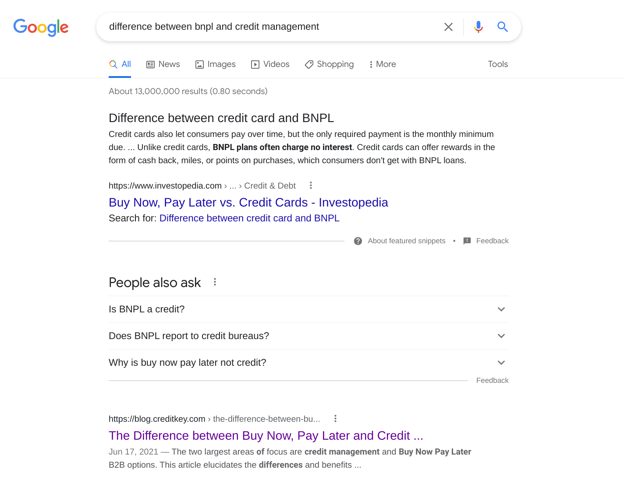
Following SEO best practices is, of course, the key to gaining this visibility in the first place.
In addition to creating killer content, this means:
- Conducting audience and keyword research to find engaging topics to write on
- Optimizing content for readability and engagement
- Creating pillar content and content clusters to keep readers on-site
- Optimizing the on-site experience from both aesthetic and technical standpoints
To be sure, a full discussion of SEO best practices goes well beyond the scope of this article. For our purposes, just know that the better your owned content is, the better chances it has of becoming owned media via search engine visibility.
Ideally, this will lead to a ton of additional engagement from a ton of high-quality leads.
Paid Media
Paid media refers to any advertising you use to spread awareness of and generate engagement with your brand.
Pay-per-click (PPC) ads are incredibly effective forms of paid media.
With PPC ads on social media, you can target specific audience members based on a variety of factors, including:
- Customer persona (e.g., demographics, geographics, etc.)
- Engagement and purchase history
- Recent on-site actions and online behavior
Remarketing ads are an effective way to get hesitant buyers back on track. / Source
Ideally, you’ll be able to combine these factors in order to create laser-focused ad campaigns for your various customers. The more specific you can get, the more effective your PPC ads will be.
You can also create PPC search ads to be displayed on Google, Bing, and the like
Like your organic SEO content, your paid search ad campaigns should start with in-depth keyword, audience, and competitive research. Your goal should be to create ads around keywords and phrases that show high purchasing intent — and that can be bid on without breaking the bank.
For example, SEMRush, Moz, Similarweb, and other brands all run ad campaigns targeting those who search for “premium keyword research tools”:
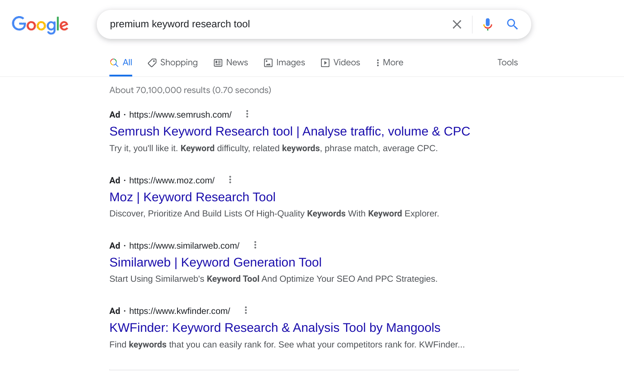 (Note: This is almost certainly a pretty expensive keyword phrase, but you get the picture.)
(Note: This is almost certainly a pretty expensive keyword phrase, but you get the picture.)
This, again, is a much more in-depth topic than we have time for here. For now, just know that creating PPC ad campaigns requires a good amount of research to be successful.
As for the actual ad content, some best practices to follow include:
- Providing a valuable offer (e.g., gated content, premium deals, etc.) to make engaging with your ads worthwhile for the viewer
- Combine power words and emotional triggers with concrete benefits and evidence to engage and nurture the viewer
- Include a strong, customer-friendly call-to-action — and make it as easy as possible for buyers to take the next step
Again, your owned media can also double as paid media. Whether on social media or Google, promoting your best-performing content can allow you to expose entire new audiences to your brand — and get buyers at all stages of the sales funnel one step closer to converting.
4. Implement Ideal Customer Profiles and Account Based Marketing
We’ve touched on this a few times thus far, but let’s make it perfectly clear:
Improving your B2B sales ultimately comes down to knowing your customer as best as possible — and tailoring your services to their specific needs.
Create an Ideal Customer Profile
An ideal customer profile is...well, just that: a description of the perfect customer for your business.
However, as HubSpot explains, an ideal customer profile (ICP) is not to be confused with a customer persona. While personas focus on the human aspect of your buyers, ICPs focus more on business-related aspects (such as company size, budget, and location).
The goal here is to target those who not only have a need for your products or services, but are also fully capable of doing business with your company for the foreseeable future. This will allow you to pre-qualify incoming leads from the get-go — and to screen out tire kickers who, for whatever reason, will never become a paying customer no matter how interested they seem.
From there, you can use your buyer personas to further segment your incoming leads and get their brand experience started on the right foot. However, today’s B2B buyers expect you to go much further than that…
Invest in Account Based Marketing
If you’re looking to spur B2B sales, investing in your Account Based Marketing initiatives is non-negotiable.
Again, HubSpot has the details:
- Companies with mature ABM strategies credit 79% of opportunities and 73% of total revenue to ABM efforts.
- 80% of marketers say ABM improves customer lifetime values.
- 86% say ABM leads to an improved win rate.
Account Based Marketing involves having your marketing and sales teams work together to:
- Identify high-value (or potentially high-value) customers, based on how well they align with your ICP and customer personas.
- Create a highly-personalized buying experience for these customers through both automated and hands-on engagements.
- Deliver tailored value to them — while also extracting maximum value from them — continually over time.
It all comes back to what we said at the beginning;
Eighty percent of your sales and revenues will come from roughly 20% of your clientele.
In order to continue deriving value from these VIP accounts, you need to pull out the stops at pretty much every touchpoint. If you can consistently deliver uniquely personalized experiences and overall value to your best customers, they’ll have every reason to continue doing business with your brand.
Providing buyer-friendly financing options to your best customers and ideal prospects is crucial for generating conversions.
In fact, the majority of B2B buyers are always on the lookout for better financing options:
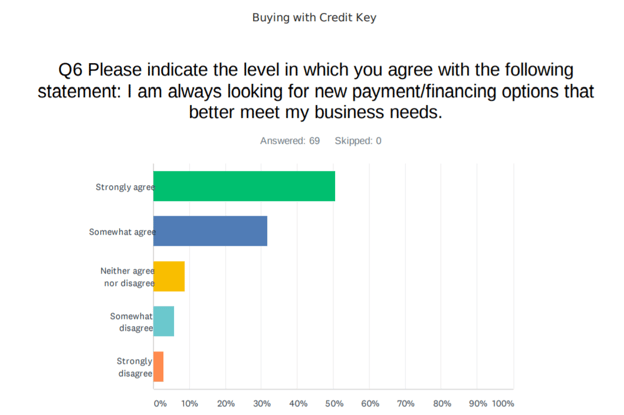
And providing a Buy Now, Pay Later option is about as buyer-friendly as you can get.
Here’s how Credit Key’s BNPL service works:
- Your B2B customer makes a purchase from your site using our financing option.
- Credit Key immediately reimburses the vendor (you) the entire cost of the purchase.
- You deliver the purchased products or services to your customer as promised.
- Your customer pays Credit Key back over an extended period of time (up to 12 months).
Summary
How to create B2B sales Growth?
- Get more value out of your small customers
- Streamline the Sales Process
- Utilizing eCommerce
- Lead Generation and Lead Nurturing
- Streamlining the Purchasing Process
- Generating traffic and Engagement
- Paid Media
- Earned Media
- Implement Ideal Customer Profiles (ICP) and Personas for Account Based Marketing (ABM)
Matthew Osborn
For the better half of a decade, Matthew has been submerged in the B2B Payments and Accounts Receivable as a Service space. As the Marketing Director of Credit Key, Matthew has an in-depth knowledge of sales and demand generation growth strategies.
View All ArticlesTopics from this blog: B2B Payments E-commerce
